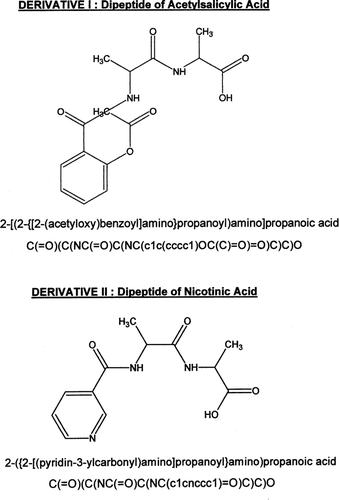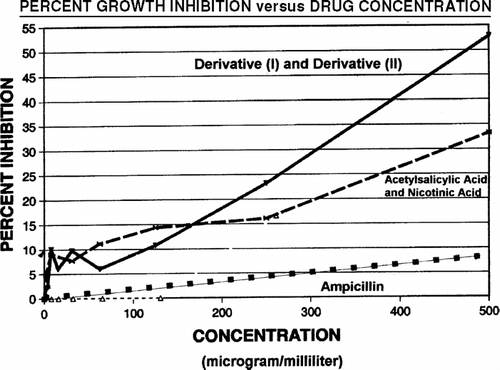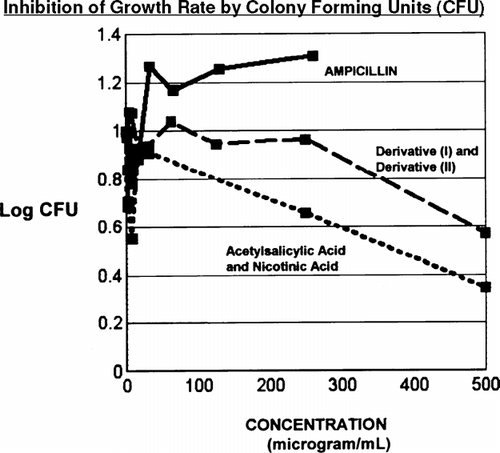Figures & data
FIG. 1 Molecular structures of dipeptide derivatives (I) and (II) are shown with SMILES notation. The D-alanine-D-alanine substituents are attached to the carbonyl carbon present in the parent compounds. Both (I) and (II) have aromatic rings within their structures.

TABLE 1 Molecular properties of compounds
TABLE 2 Properties of dipeptide derivatives
FIG. 2 There is substantial inhibition of bacterial growth as indicated by the plot of Percent Inhibition versus Concentration in μg/mL. The mixture of nicotinic acid and acetylsalicylic acid expresses greater than 15% inhibition at concentrations above 200 μg/mL. The mixture of dipeptides (I) and (II) express greater than 15% inhibition at even lower concentrations of 160 μg/mL. Growth inhibition induced by (I) and (II) increases at a faster rate than other compounds to reach greater than 50% inhibition at 500 μg/mL. In the concentration ranges shown to be effective for (I) and (II), the growth inhibtion induced by ampicillin remains below 10%.

FIG. 3 Inhibition of colony-forming units also is indicative of bacterial growth inhibition. For ampicillin the number of CFUs continually increases throughout the studied region. However, for (I) and (II) the number of CFUs immediately decreases and continues to decrease throughout the concentration range. The parent nicotinic acid and acetylsalicylic acid also induce significant reduction of CFUs throughout the range of concentrations.
